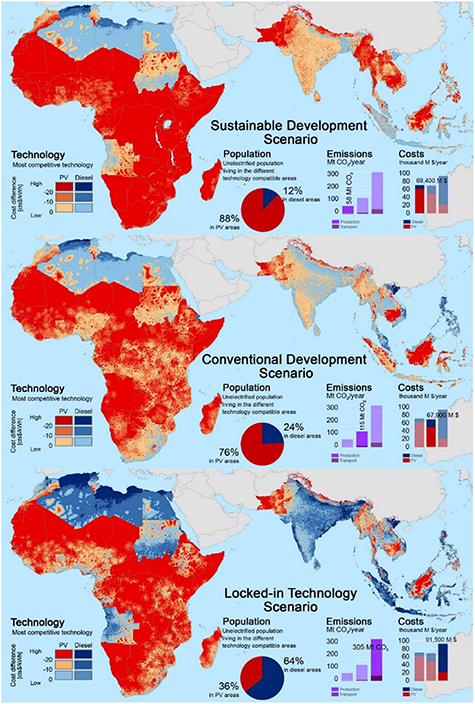The UN sustainable development goals (SDGs), approved six years ago, lay out a shared vision on 17 key developmental concerns. Within this framework, SDG7 targets access to affordable, reliable and modern energy services, while SDG13 focuses on reducing greenhouse-gas emissions and adaption to the impacts of climate change.
Efforts to achieve SDG7 and SDG13 are interlinked, in that fossil fuels will be used, to a greater or lesser extent, to expand access to modern energy services in developing countries.
A new research article, co-authored by UNEP DTU Partnership experts, provides previously unavailable, high-resolution, geo-referenced estimates of the extent to which poor households can afford fossil- or renewable energy-fuelled rural-electrification technologies, and shows the cost and greenhouse gas emission associated with each of these two options. The analysis covers 71 countries in Africa, South Asia and developing East Asia, representing 85 percent of the world’s un-electrified population.
The article, Universal access to electricity: actions to avoid locking-in unsustainable technology choices, has just been published in Environmental Research Letters and can be downloaded.
Making the case for renewable energy-powered rural electrification, and against fossil fuel-powered technologies, the article quantifies the magnitude to which regulating the price of diesel—through subsidies and taxes— affects two sets of parameters: the extent and cost of electrification programmes, and the greenhouse gas emissions associated with the implementation of these programmes. In light of their findings, the authors advocate for a moratorium on new fossil fuel-powered rural electrification projects.
